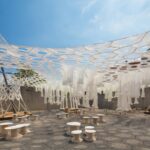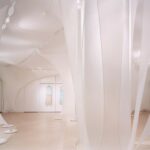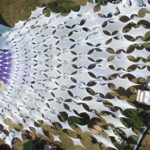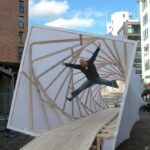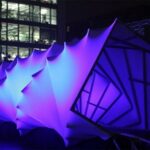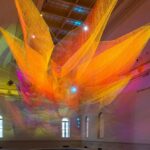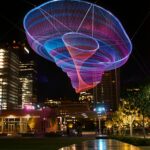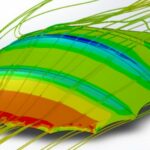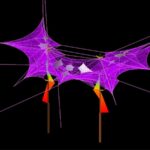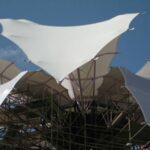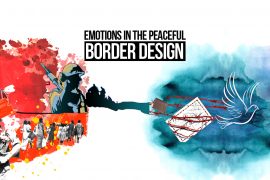“Textile forms of habitation have a long history going back to Paleolithic times and represent an archetypal form of building which has endured to the present day. Textiles are light, easy to convert or dismantle, and they provide protection against wind, ultra-violet rays and rain.” – Susanne Fritz, for Architonic, 2011
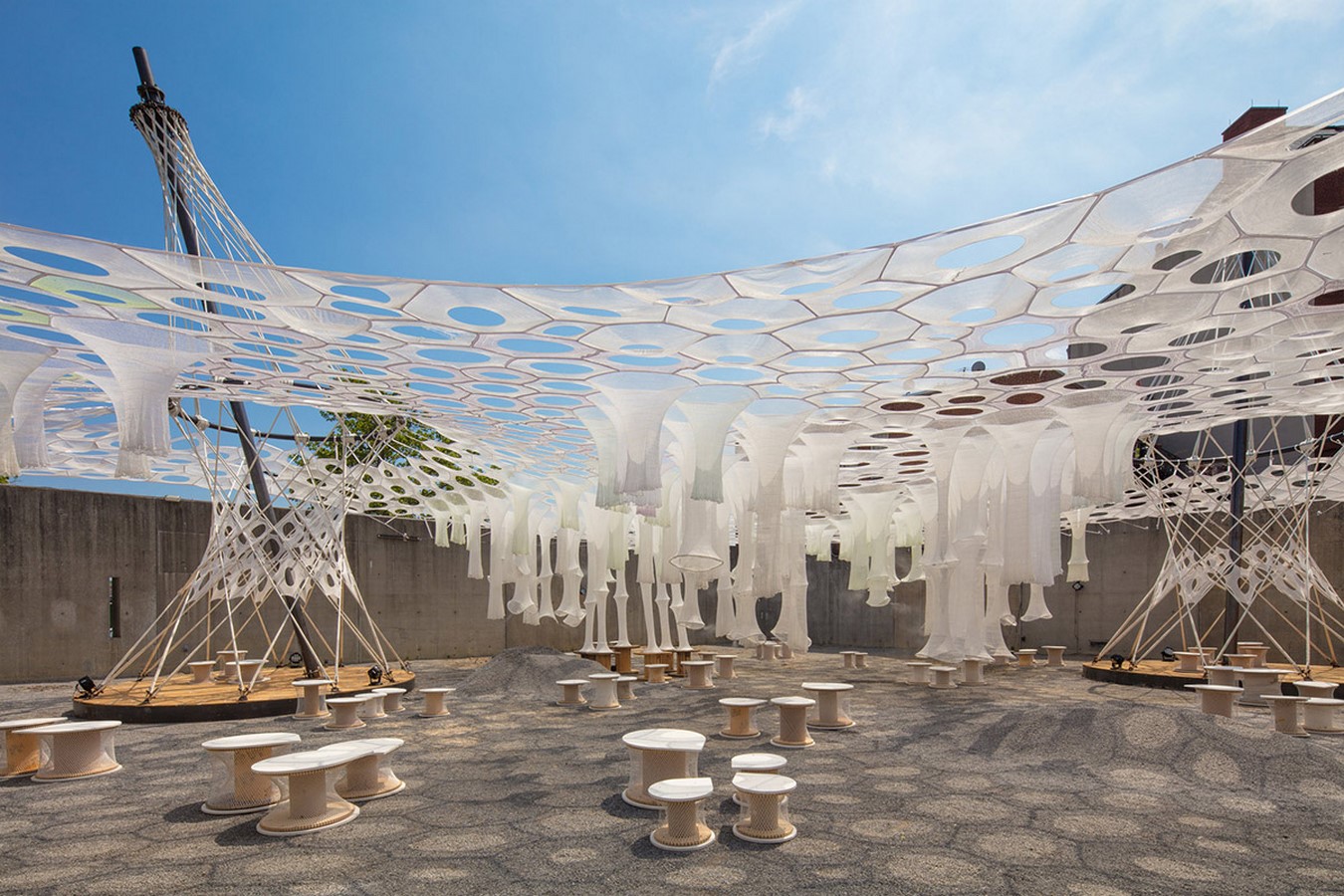
Fabrics in architecture are usually boiled down to interim, tensile membranes that could be erected and intensified as in when needed, like tents, or as partitions in a convention hall or a warehouse. With advancing technology and the mechanization of numerous properties and attributes of fabrics, this notion of makeshift structures has changed and evolved to perdurable structures that exist for the long run. Fabrics possess a wide array of benefits, ranging from fulfilling environmental targets, managing stormwater, to decreasing the urban heat island effect and providing quick installation times and processes. Added advantages of fabrics include design flexibility, exceptional durability, and low maintenance. It, therefore, certainly is a blend of beauty and form composed of minimal resources.
Modern architecture reclaimed tents as important architectural forms and thrived on the notion of not only temporary constructions but also permanent structures. Because advanced and durable fabrics span enormous lengths, their application has become a highly specialized sector within the design, technology, and construction industry. Simultaneously, the specialized static conditions imposed on fabric by wind load, weathering, and distortion, as well as structural concerns such as mounting and bracing these textile components, necessitate a significant degree of technical expertise.
Fabrics in interiors
Cloth is an excellent material to experiment with when it comes to designing in all arenas, be it fashion or interiors of a space that lacks natural light and fenestration. Tahari Showroom in New York is an applaudable example of the usage of cloth in interiors. Gisela Stromeyer, the architect of this showroom, extensively utilized cloth in numerous ways to convert a dull space into a space that portrayed Elie Tahari’s designer collection in a very elegant and debonair manner. Large semi-oval perforations were cut into the swatches of fabric for the demonstration of the collection and storage. A column in the core of the nearly square space holds two types of fabric, one translucent and the other opaque. The illuminated panels of cloth are not sewed together, but are held together by a slew of hooks. Consequently, the swatches of cloth are only linked to each other at precise spots, emphasizing the flexibility of Lycra as a material but also allowing the portions of cloth to be detached again. It is a deployable installation and set-up, meaning, once not in need, it can be detached and stored.
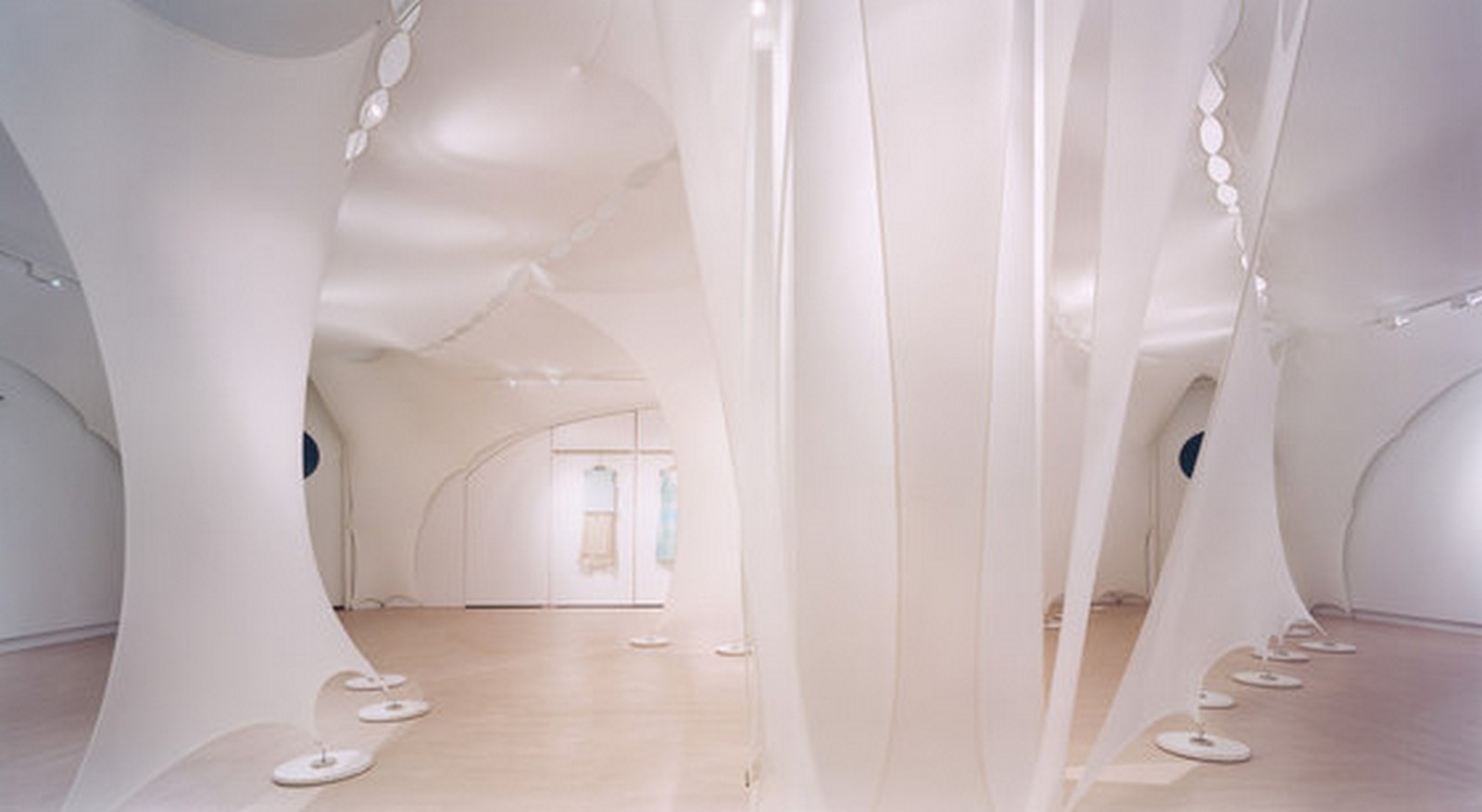
Fabrics as installations
As discussed earlier, fabrics are efficient when it comes to temporary structures like pavilions and installations. Fabrics are widely used for installations because of their coherent constitution, their flexibility in terms of usage, and in terms of handling external pressure. Textile skin can also be operated as a projection screen for staging a light show that is interactively regulated, as in the case of DAR LUZ installation by Lars Meeß-Olsohn and Ali Heshmati.
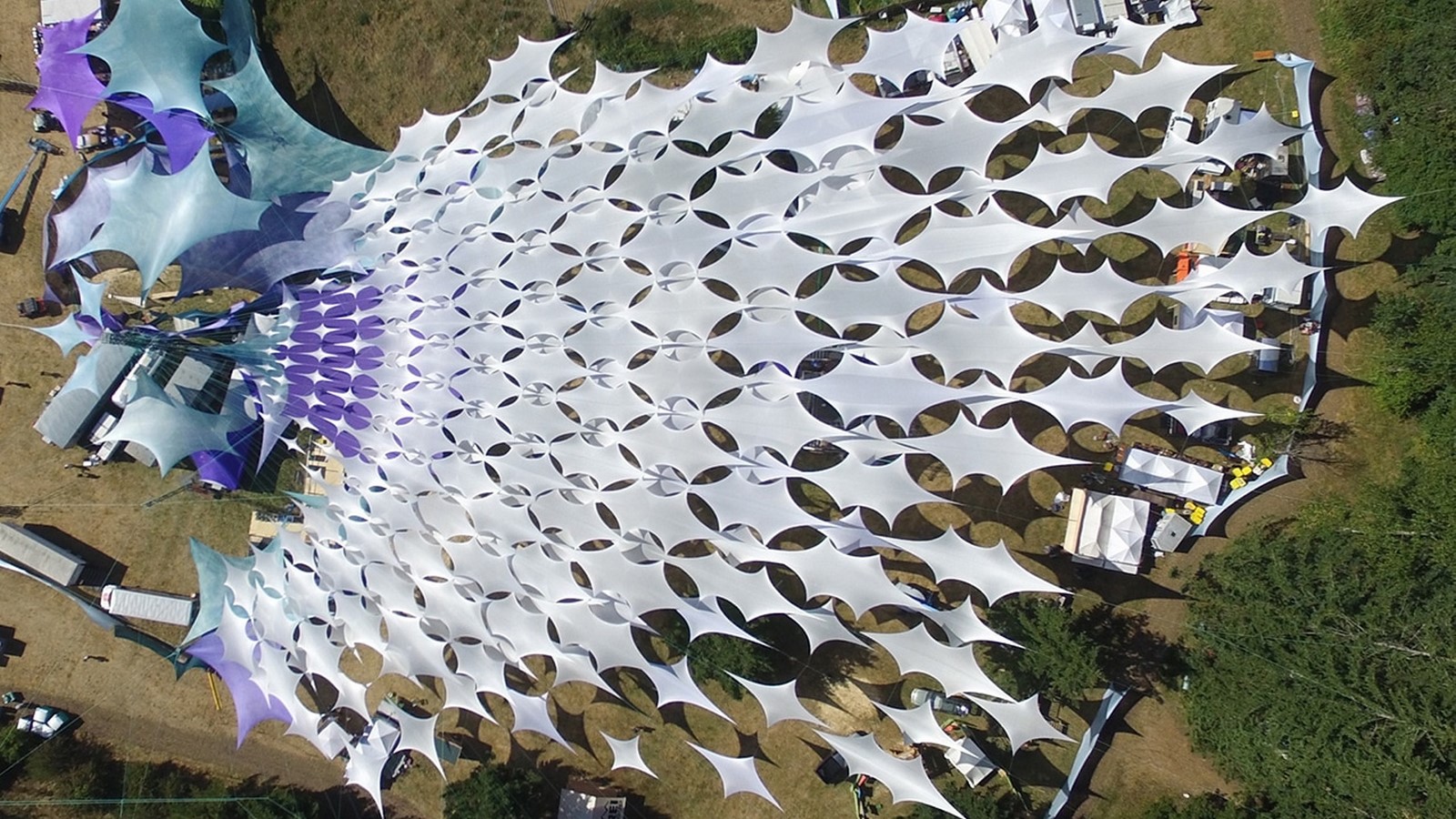
Along with the eye-catching geometry of the form, the set-up with dynamically controlled light and the sound was exceptional: numerous sensors monitored the visitors’ impulses to move, which culminated in the subversively driving sound carpet. Visitors also walked through light curtains composed of green line lasers, with the resulting imprints on the hands, arms, and feet providing an optical correlation to the corresponding movement, its originality, and dynamism. The interim installation was made from conventional roof battens fitted together into 22 square frames and mounted to the wooden walkway at a 15° angle. Then, 150 square meters of elastic, impregnated cloth, were stretched over this innovative wooden construction.
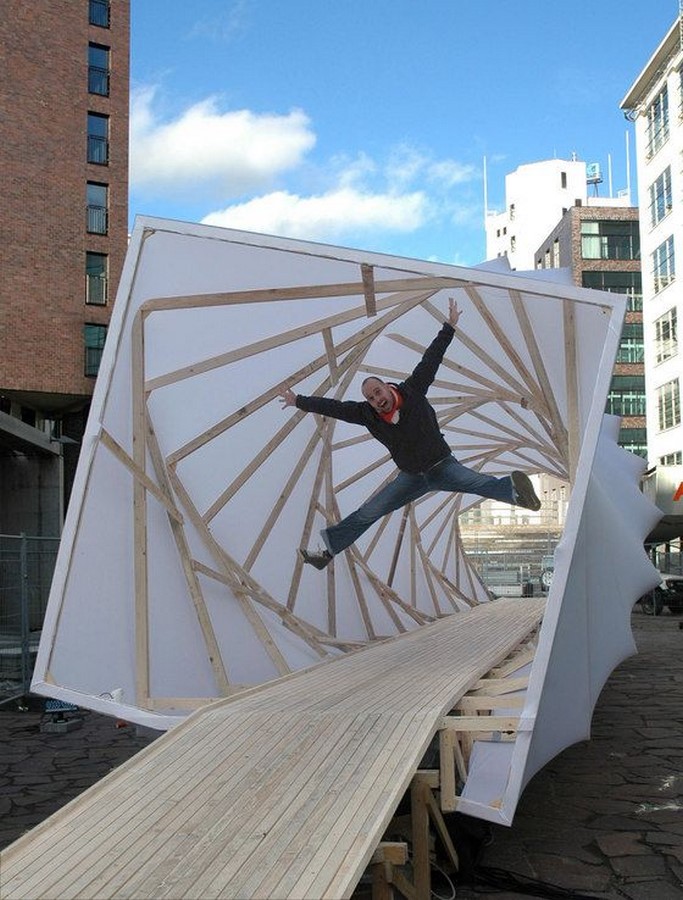
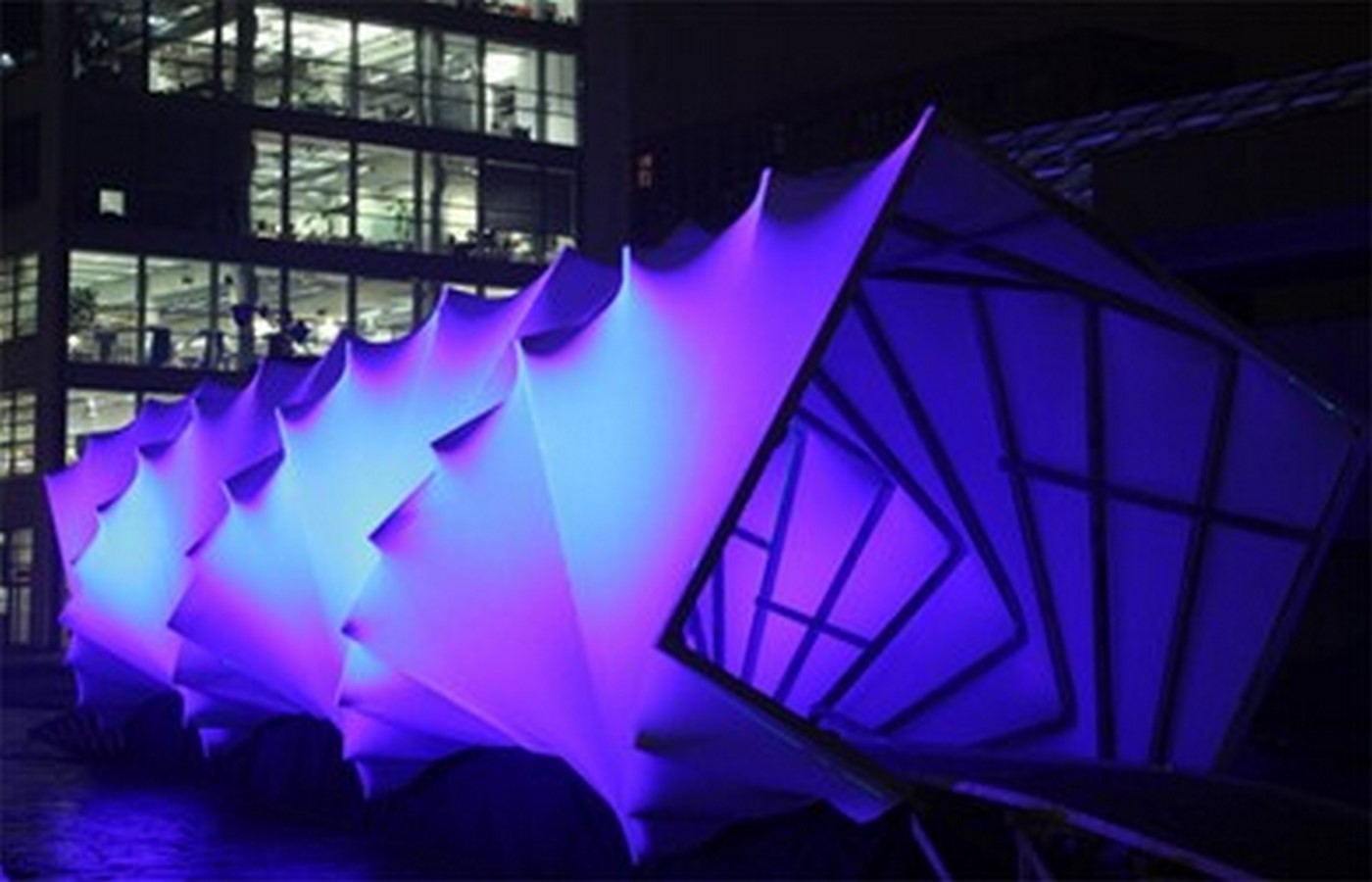
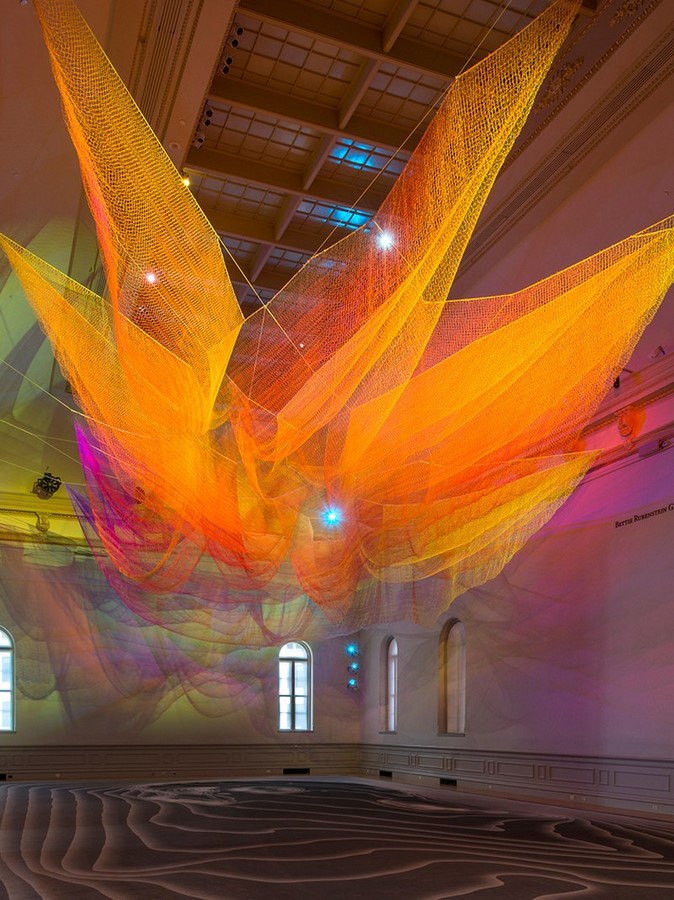
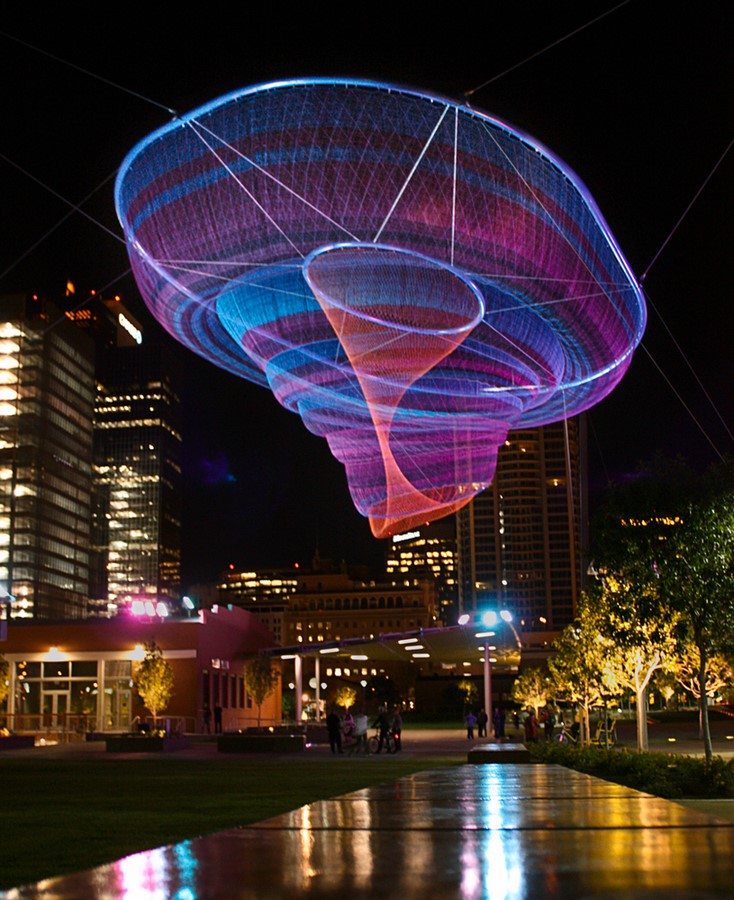
Fabric as a sculpture
Fabric creation that functions as mixed media sculpture is one of the most striking approaches to integrate craftsmanship and fine art. These works may not fit inside the constraints of conventional fine art media, but they nonetheless entice designers. Benjamin Shine, a British artist, creates magnificent surreal sculptures by folding and compressing large sheets of tulle fabric. Mesmerizing, tranquil faces emanate from the intricate fabric folds like thick smoke in his sequence of spectacular fabric sculptures. Shine symbolizes ‘contemplations, meditation, and the concept of finding clarity out of chaos’, both physically and symbolically by arranging single segments of tulle into facial forms. To generate varying amounts of opacity and tonality, each piece is made by clustering and overlaying fine-netted fabric.
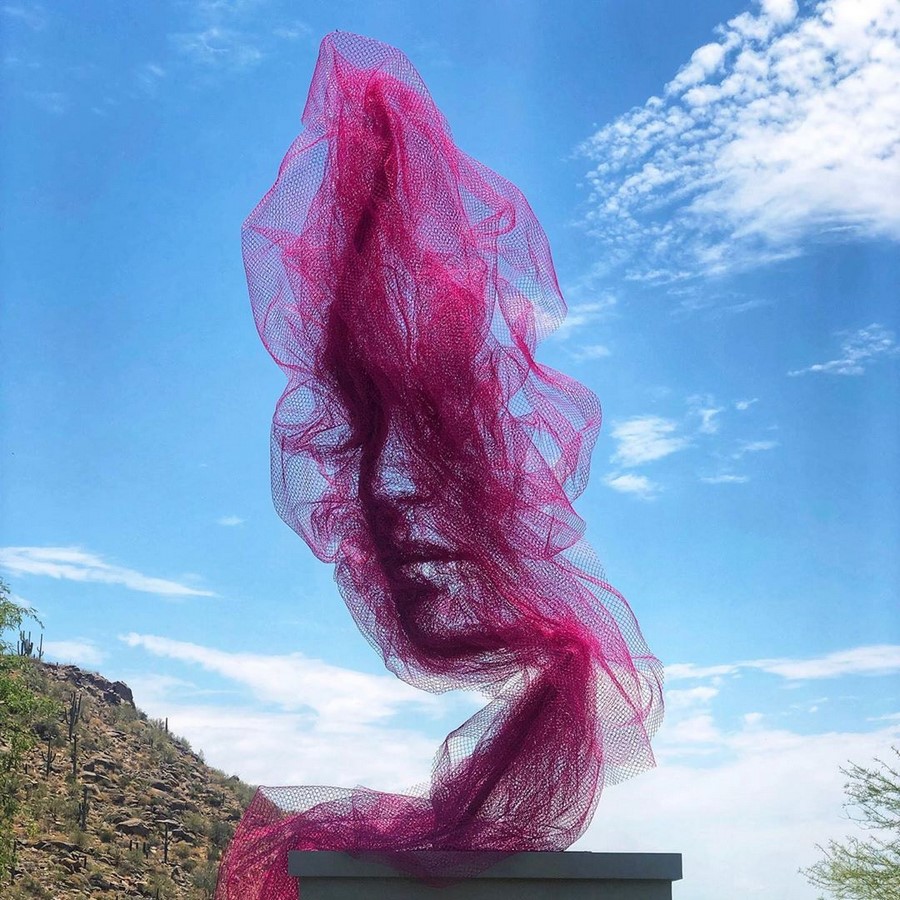
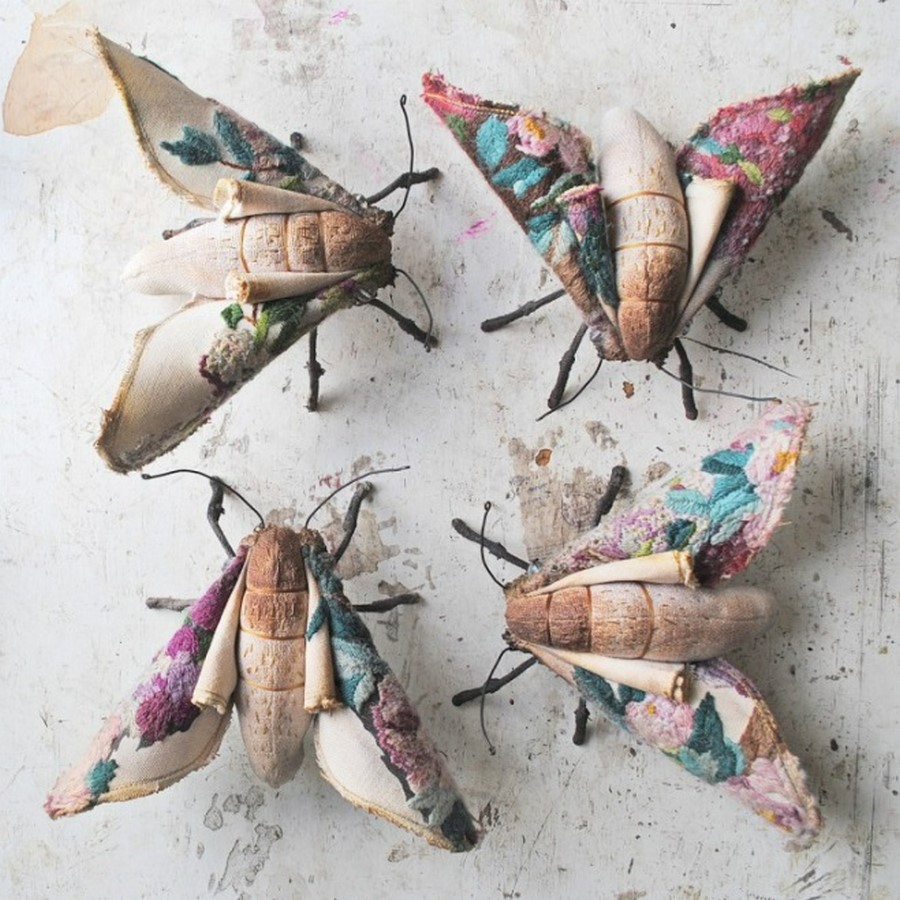
Permanent fabric architecture
Fabric technology has advanced tremendously over time, and architects and engineers today have a detailed understanding and intricate experience of these long-lasting materials and are integrating fabric structures in new directions. Fabric structures are becoming more of the rule – rather than the exception – as a result of this infusion of experiences and experimentations. TFS is increasingly acknowledged as semi-permanent and permanent constructions as technological improvements and elements become sturdier and more enduring.
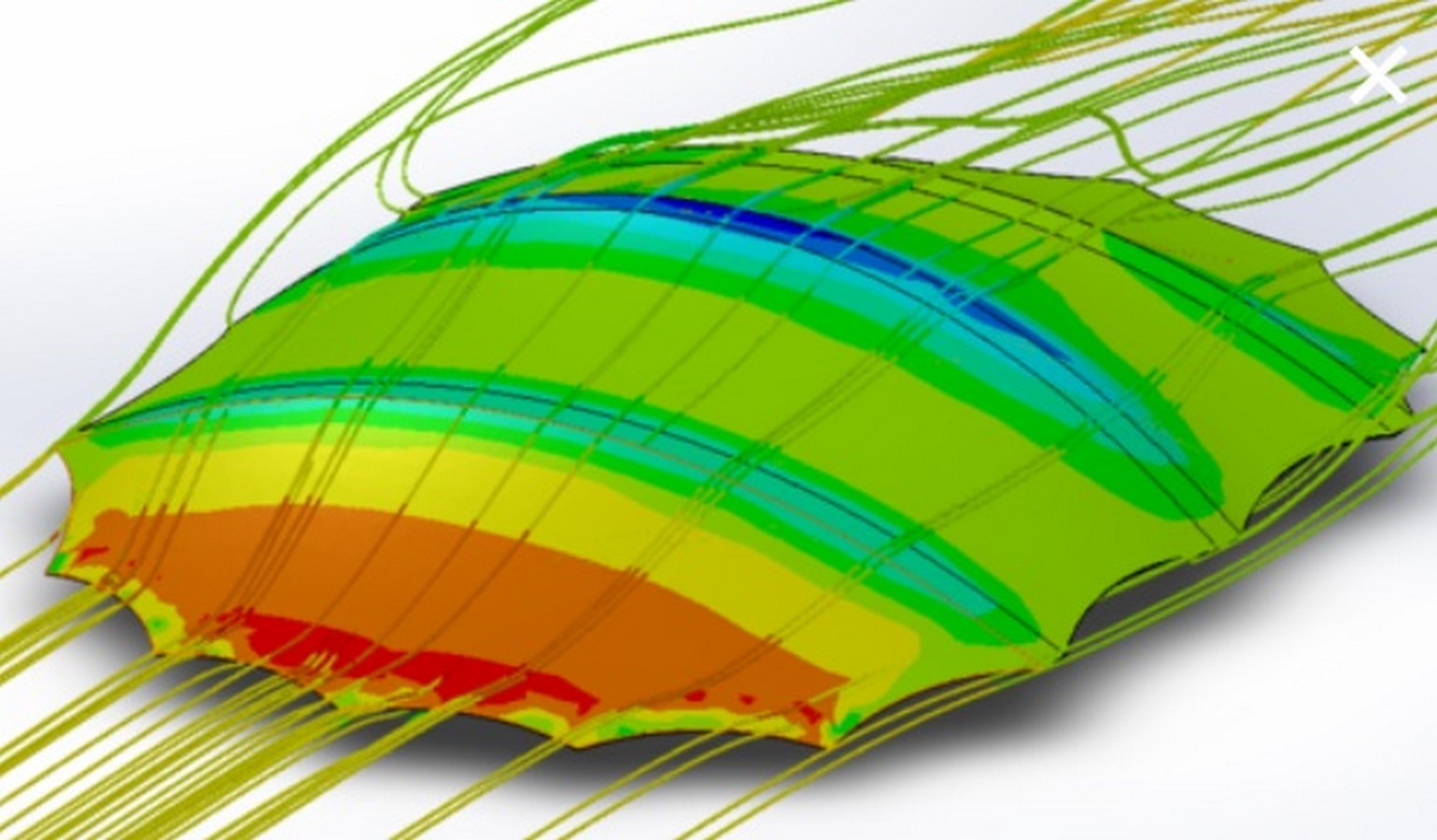
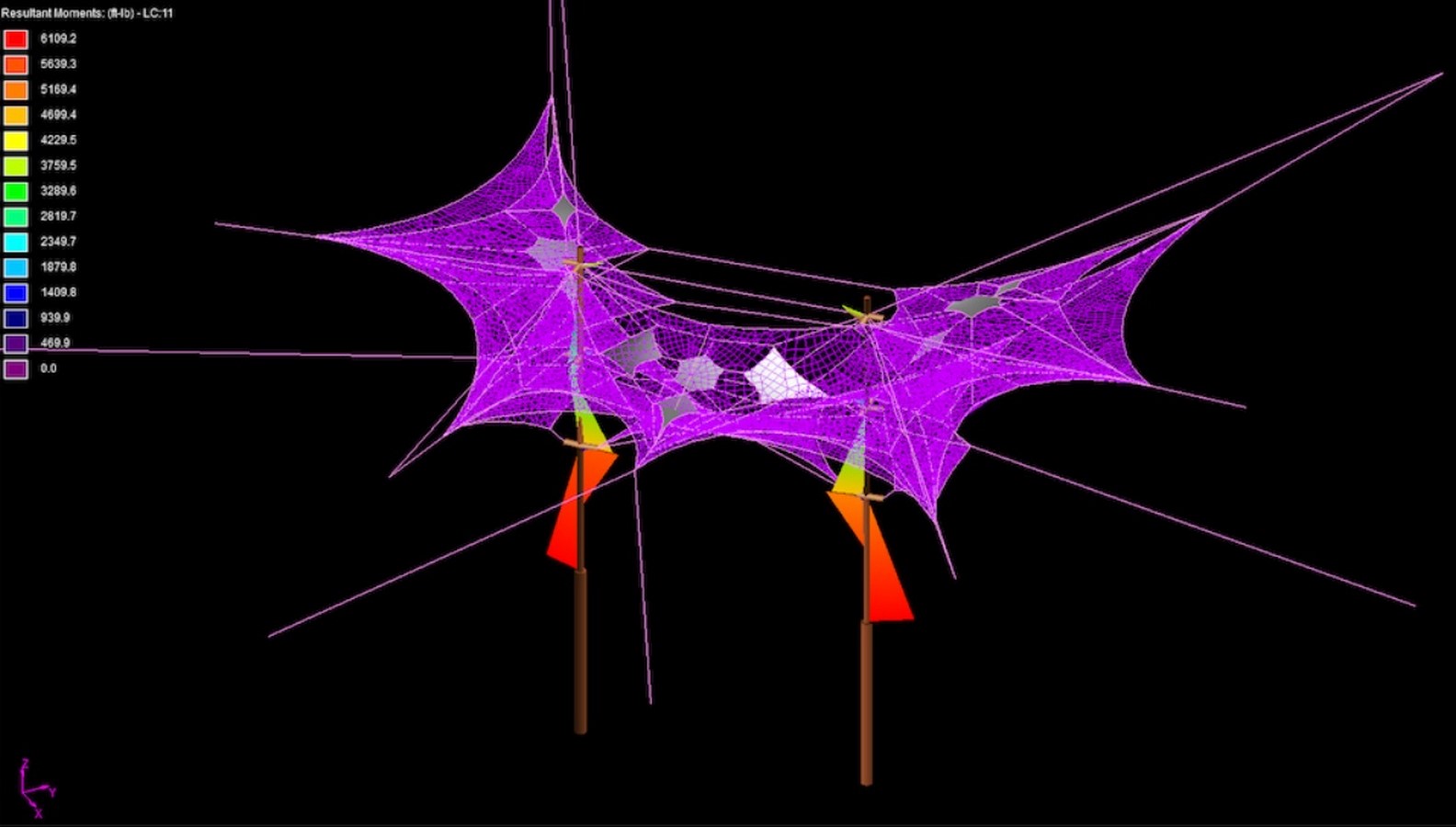
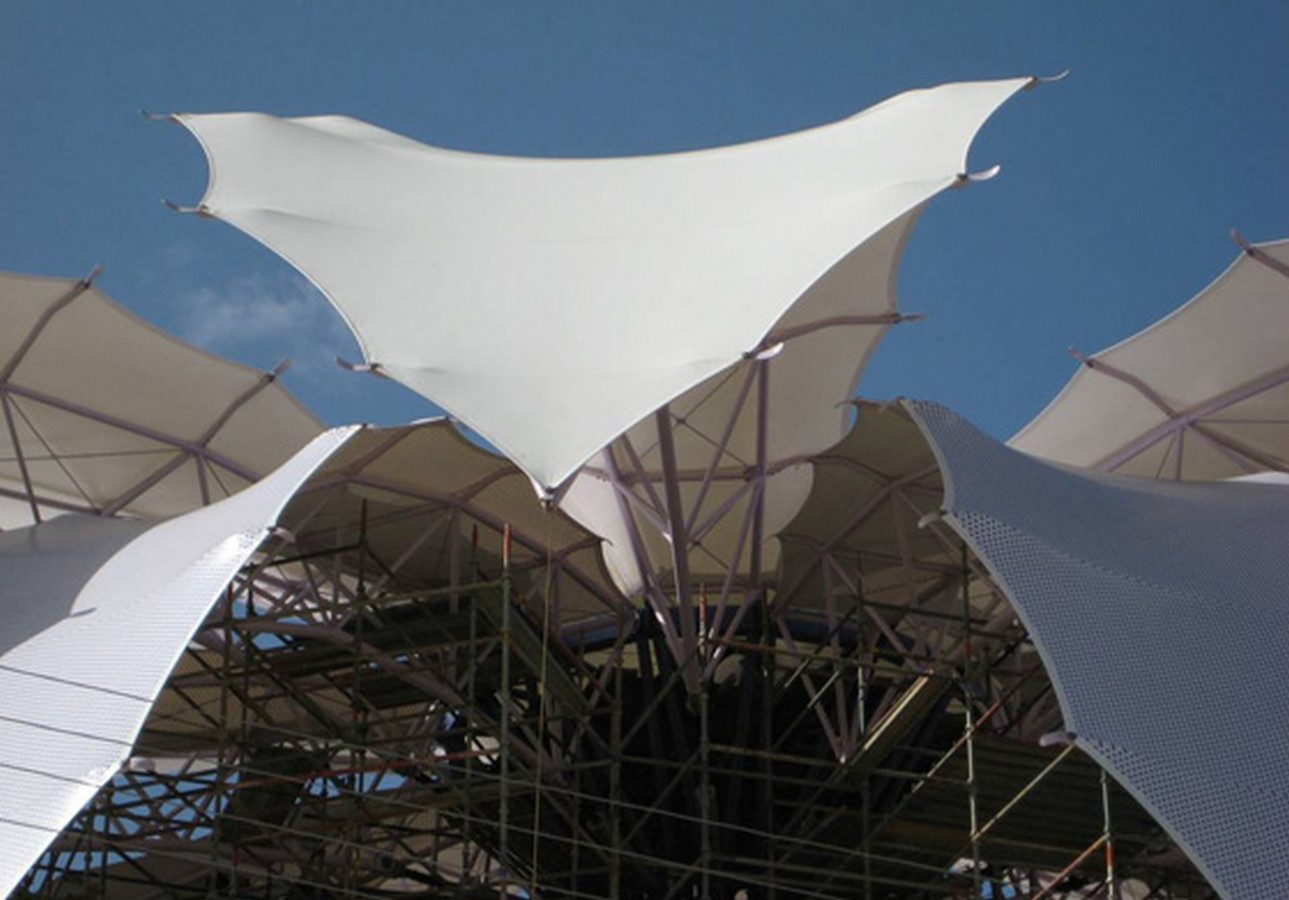
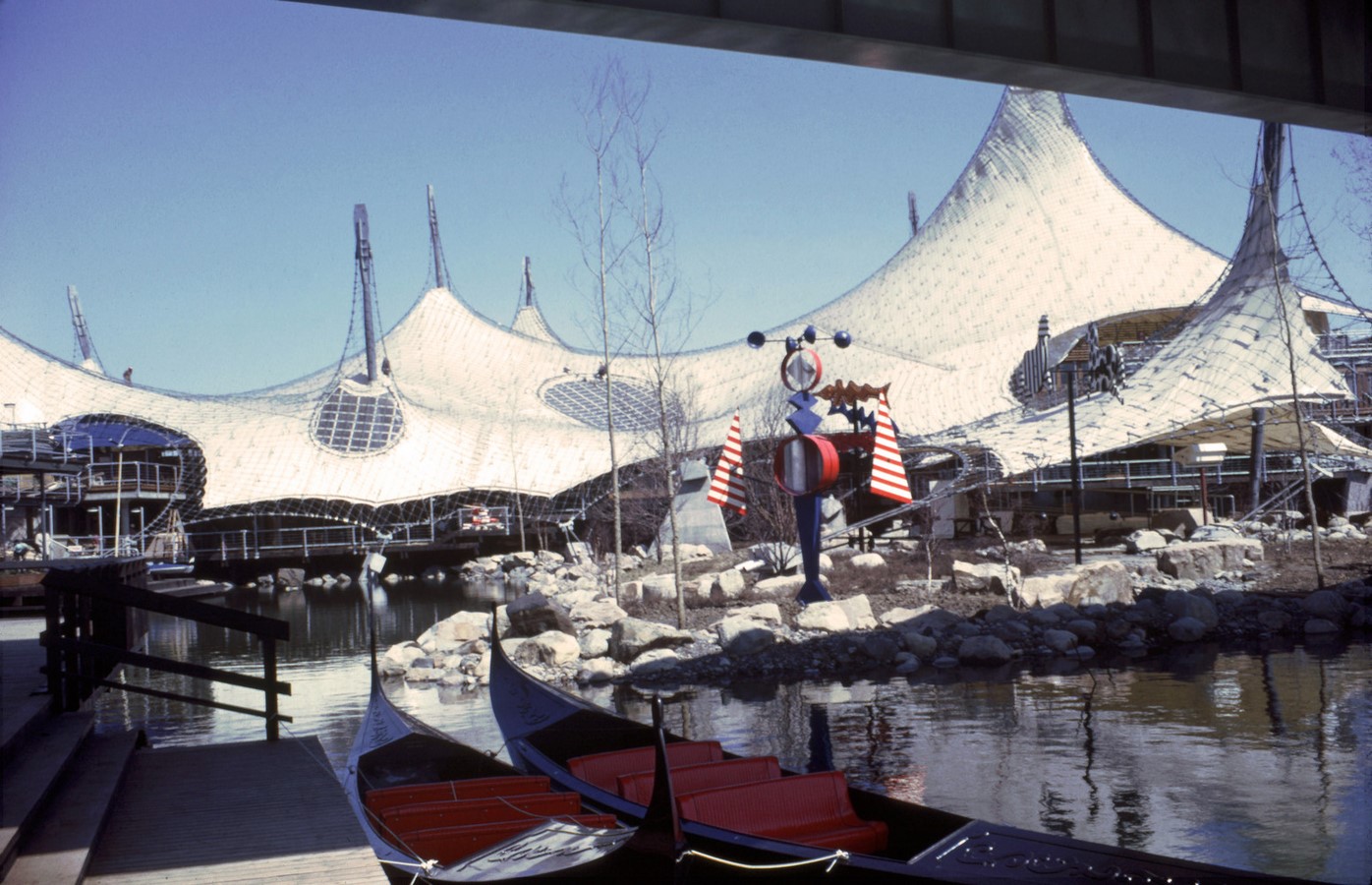
References and citations:
- Online sources:
- Colleen Dehart (December 2018), 7 Ways Innovative Fabric Architecture Can Transform Your Space, Available at: https://gbdmagazine.com/guildworks/ [Accessed: 12th July 2021]
- Pacheco A. (May 2019), The Architect’s Newspaper, Fabrics could be the next big thing in facades, Available at: https://www.archpaper.com/2019/05/fabric-textiles-facadesplus/ [Accessed: 12th July 2021]
- Susanne Fritz (August 2011), The Very Fabric of Architecture: textile use in construction, Available at: https://www.architonic.com/en/story/susanne-fritz-the-very-fabric-of-architecture-textile-use-in-construction/7000625 [Accessed: 12th July 2021]
- Author: Fabric Architecture (November 2013), Trylletromler / Fabric Architecture, Available at: https://www.archdaily.com/447324/trylletromler-fabric-architecture, [Accessed: 13th July 2021]
- WA Contents (May 2017), Snarkitecture Created Pop-Up Clouded-Fabric For Valextra’s Store in Milan, Available at: https://worldarchitecture.org/architecture-news/cvcze/snarkitecture-created-popup-cloudedfabric-for-valextra-s-store-in-milan.html [Accessed: 13th July 2021]
- WA Contents (July 2017), United States Architecture News, Jenny Sabin Studio’s Cellular Lumen Fabric Wraps MoMA PS1’s Courtyard in NY, Available at: https://worldarchitecture.org/articles/cvfhv/jenny_sabin_studio_s_cellular_lumen_fabric_wraps_moma_ps1_s_courtyard_in_ny.html [Accessed: 13th July 2021]
- Cromwell J. (June 2016), 5 Things You Need To Know About Permanent Fabric Structures, Available at: https://allsitestructures.com/permanent-fabric-structures/ [Accessed: 13th July 2021]
- JANET ECHELMAN Official Website, Available at: https://www.echelman.com/ [Accessed: 13th July 2021
- Books:
- Thomsen M. (2016), Knit as bespoke material practice for architecture, ACADIA 2016 Conference, POSTHUMAN FRONTIERS, University of Michigan.



